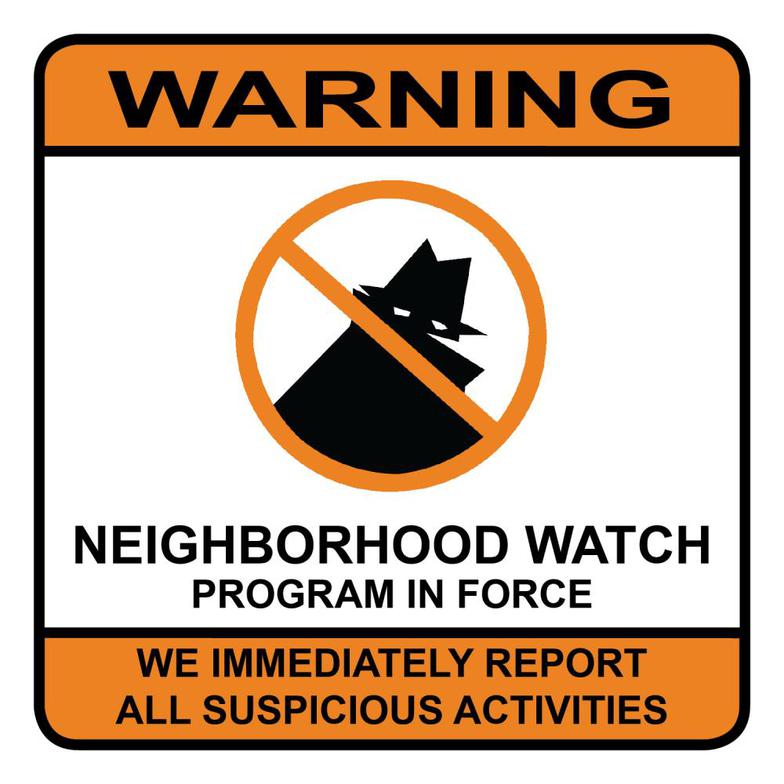SecurityAdvisoryCouncil.com
Security Risk Analysis - Issues - Strategies - Solutions - Resources
Security Risk Advisory Consultants - Advanced Security Planning
Security MostWanted For America!
WELCOME TO OUR....................SOURCE...
SECURITY NEWS
INFORMATION - INTELLIGENCE - ISSUES

Improving Security And Safety In Our Communities
Using Neighborhood Watch Bike Patrols
Have you seen bicycles used around your community by various Security Patrols? They have become very popular over recent years as a low-cost approach to cover a lot of ground and still be accessible to the citizens they watch over.
Bicycle Patrols always seem to achieve being both watchful and friendly at the same time. Maybe you are interested in bringing this approach to your neighborhood and citizens. You may be surprised to know how many communities have done this before. Here is some valuable information that may interest you.
The earliest use of the bicycle by police may have been in Illinois as early as 1869 when a sheriff and his deputies used several very expensive, heavy and uncomfortable patrol bikes on what were then poor quality roads. Needless to say, this attempt was short-lived. But, some 23 years later in 1892, Orange New Jersey implemented "modern like" bicycles for quick response. By 1917, an estimated 50,000 bicycle police were patrolling around the United States. In just the five boroughs of Greater New York, 1200 bicycle patrolmen were patrolling eight to nine times the area of walking patrolmen.
However, by 1929, after almost 45 years of intermittent but growing use of the bicycle by police forces, radio and telephone technology began to replace both foot and bicycle patrols with police cars. New York City no longer had bicycle-police and by 1934 Richmond had terminated their bicycle unit. As the U.S. became suburbanized, the police became more dependent on their vehicles. And, almost without notice, technology-dependent police forces became tied to their patrol cars and stations; unintentionally isolating themselves from the communities they wanted to serve and protect.
By the 1960s however, communities began to notice this separation and started asking for a solution. Three Presidential Commissions between 1968 and 1973 returned police to patrolling cities and neighborhoods on foot. In 1970, the small town of Lindsay, California started using police bicycle patrols. The Lindsay Chief of Police noted that bicycle patrols covered just about as much territory as their police in patrol cars with the added benefits gained from a silent approach and the high-seated view of crimes from the patrolling bicycles. In 1972, the Baltimore police started using bicycle patrols because cars had difficulty traveling through narrow alleys. With the addition of these patrols, crime dropped 50% in six months within the four bicycle beats patrolled from 8 AM to midnight. Richmond again started using the bicycle patrol for the first time since 1934.
With the Bicycle Patrols improved view and closeness to the citizens, riders found it easier to get through traffic gridlock. By 1993, Seattle had 70 police on bicycles and was one of the first to use Bicycle Patrols for general patrolling. Further, Seattle publicized its efforts that then stimulated interest in other police departments, private security companies and campus police throughout the world.
Bike patrols offer numerous security advantages to their communities: improved rider visibility, ability to travel at least twice as fast as a walking person, reaching areas inaccessible by car, lower overall operating costs and more easily maneuverability through traffic. Further, bicycles, because they are quiet, enjoy a stealth advantage and tend not to be noticed while also allowing their riders to be more approachable than patrol security cars. The cost of a bike (about $300 to $1200) is substantially less than a patrol car and has an average annual maintenance cost less than $300.
The policing and neighborhood advantages of bicycle use is:
1) Increasing patrol area size and access.
2) Improved community interaction.
3) Observing and reporting crimes and speeding automobiles.
4) Traffic enforcement (police only responsibilities).
5) Stealth advantage: cyclists see more criminal activity.
6) Rapid response to needed locations through radio or telephone, particularly through gridlocked traffic, inaccessible areas by car and large crowds.
7) Mobile ability to quickly traverse difficult terrain or crowded areas.
8) Enjoyable exercise while performing a community security service.
Conclusion
The use of a bicycle patrol on a neighborhood watch would obviously have fewer roles than your local police departments. Your community should seek mentoring to get your community started and trained by a knowledgeable and active bike patrol. There are many examples to follow. Today, New York City boasts 3,000 plus bicycle police with another 350 in Los Angeles and 210 in Houston. In 2000, over 6,000 police departments have a bicycle unit totaling over 35,000 bicycle officers nationwide.
Our communities in the U.S. have long been known for increasing the use of the automobile. Your community will not the first to recognize the potential value of the bicycle as a means of neighborhood patrol. The open nature of the bicycle will keep your watch in touch with your surroundings and more approachable to your residents and citizens. We recognize the bicycle's advantage for allowing us to travel most anywhere. The level of automobile traffic, particularly during major events, slows all motorized traffic to nearly a stand still. Your neighborhood bike patrol would be one example in your community where using bicycles to travel is efficient and convenient.
We hope that you are interested in finding out more information on starting your own Neighborhood Watch Bicycle Security Patrols. Our goal is to improve the safety of our neighborhoods by starting Neighborhood Watch Bike Patrols in as many communities as possible. If you have questions on starting your own neighborhood bike patrol, please feel free to contact us through our website or call us at 727.657.3339
By Signing Up For Our NewsLetter, You Will Receive The Latest Security News
Once-A-Month!
The Incredible Reasons Navy SEALs Urge All Americans
To Carry Gear Like The Shockwave Torch



















